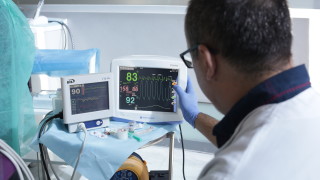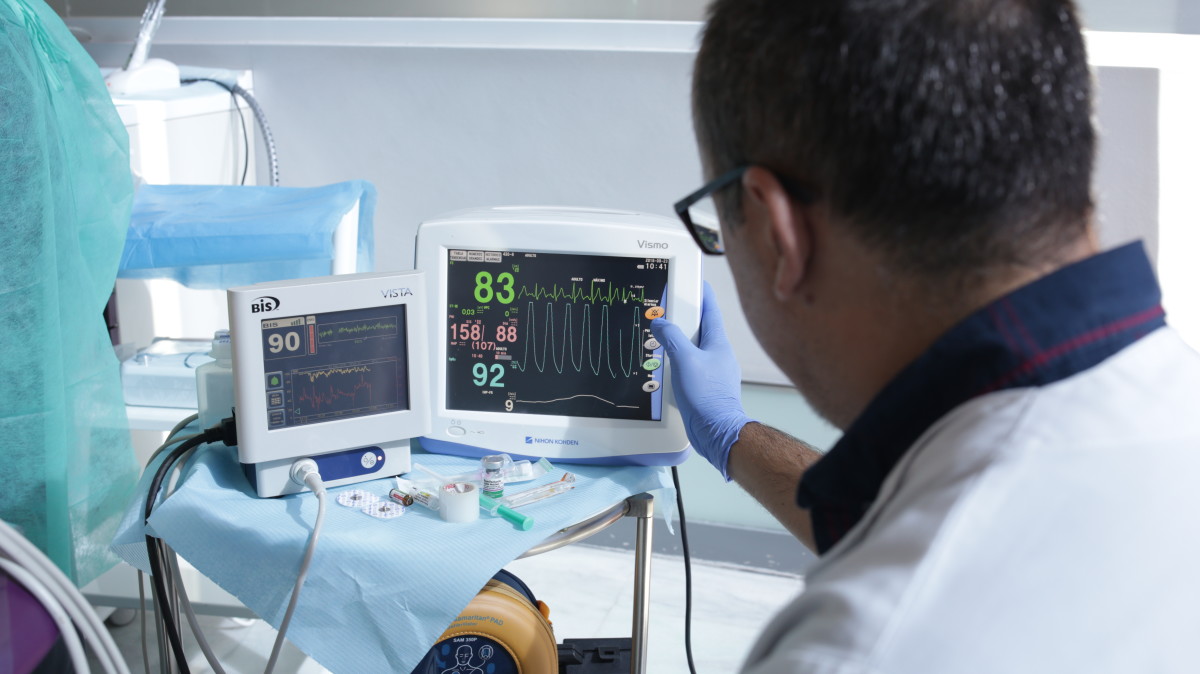There are many, many people who suffer fear of the dentist.
Why? Some of them were afraid since they were children, when they hadn’t still visited a clinic or felt pain. “It gives me the creeps!” is a common response. It´s the same when we see our mother jumping after finding out a mouse. By dint of watching her shouting, finally we also are afraid of mice. Or is it in our gene pool after generations of tooth-pullers with no anesthesia? The true fact is that the fear of the dentist is a very common feeling, though nowadays we experience no pain in the clinic.
But even for the people who resist the idea of visiting the dentist due to fear, there is a solution. It’s called intravenous conscious sedation.
What is intravenous conscious sedation?
Conscious sedation is a type of anesthesia given through an intravenous line and provokes a reduction of consciousness. The patient has no pain, but the capacity to respond to physical stimulus and oral orders. Furthermore, while the patient is under its effects, he will breath by himself.
This technique is very safe, but the anesthesia must be given and controlled by the specialist.


Who may benefit from this technique?
Patients who suffer fear or anxiety before surgical procedures with general anesthesia. Also elderly patients or children who cannot keep calm during a dental treatment.
Patients who have to be exposed to long procedures, as for example implant surgeries, which require a long time in an uncomfortable situation. It is also recommended in case the patient is receiving several treatments the same day.
Patients with psychological disabilities who aren’t unable to get relaxed so the dentist cannot work, even diagnose them. For instance Down Syndrome, Parkinson or Alzheimer’s Disease.
In order to know which patients may benefit from conscious sedation, you can consult the ASA classification by the American Society of Aneshesiologist.
- ASA I – Normal healthy patients.
- ASA II – Patients with mild and controlled systemic diseases.
- ASA III – Patients with severe systemic diseases as substantive functional limitations.
- ASA IV – Patients with severe systemic disease that is a constant threat to life.
- ASA V – A moribund patient who is not expected to survive without the operation.
Patients recommended for conscious sedation in the clinic are ASA I and II. For patients classified as ASA III, they must be valued previously by the anesthetist so he can determine if the procedure must be performed in a hospital. Artedental specialists can go to the hospital to do the surgery if the condition of the patient requires it.
What do you feel under conscious sedation?
During the sedation, the patient is conscious but in a deep relaxed state similar to sleep. The patient breathes by his own and responds to oral orders, collaborating with the dentist. Once the patient is revived, he usually suffers a light amnesia of what has happened, so the time has gone quick for him. The lack of pain and memories will reduce his anxiety the next time he visits the dentist.
Who is authorized for giving intravenous conscious sedation?
Conscious sedation is always given by an anesthetist, a doctor specialized in anesthesia and resuscitation. The anesthetist watches the patient the whole treatment, checking he is in optimal conditions regarding safety, comfortableness and analgesia. This full control includes electrocardiogram, saturation, blood pressure and electroencephalographic monitoring. He can also give the patient intravenous antibiotics or anti-inflammatory drugs in case it is necessary.


For this type of sedation, short duration drugs are used. Once the procedure has finished, the patient can go home.
The anesthetist is responsible for reviving the patient, checking that he is able to be released from the clinic. Basically, the patient should have normal tension, respiratory function and pulse, as well as be able to walk by himself normally. It is recommended going to the clinic accompanied and avoiding to drive that day. If it is possible, resting and not working that day.
Benefits for the dentist
The fact that the patient is under the effects of sedation has many benefits for the dentist too. The main one is that he will face a relaxed, collaborating patient, who feels comfortable in every moment. Furthermore, as the patient is supervised by the anesthetist, the dentist is even more concentrated in the procedure.
In our dental clinic in Puerto de la Cruz, Artedental, we are specialists in dental implants. We also have wide experience in conscious sedations. In Artedental, we always work with a doctor specialized in anesthetics. Safety is always the most important thing.

